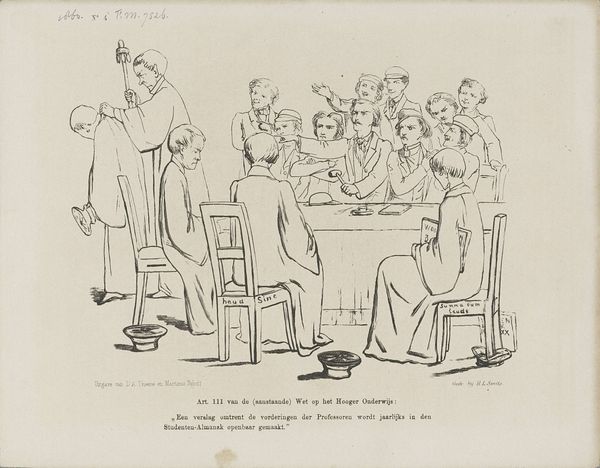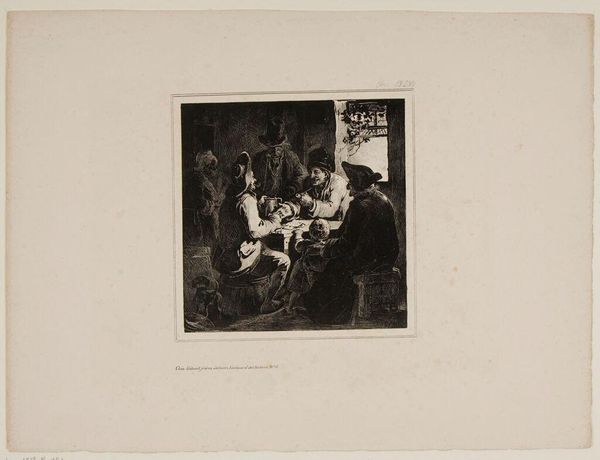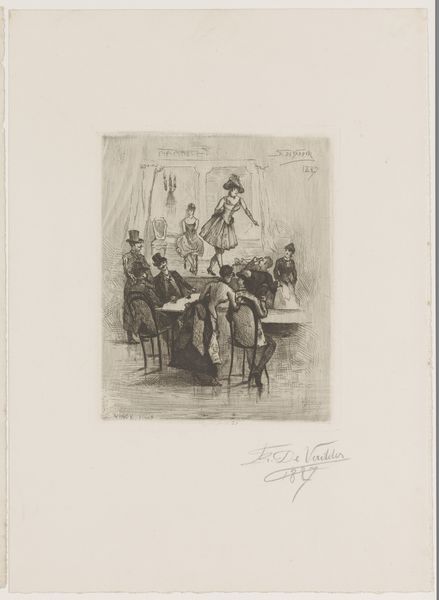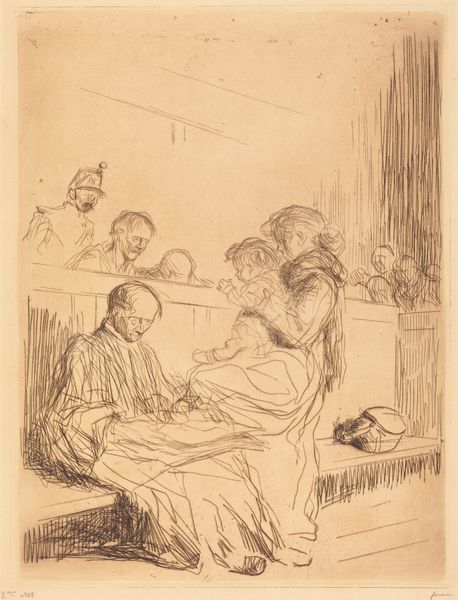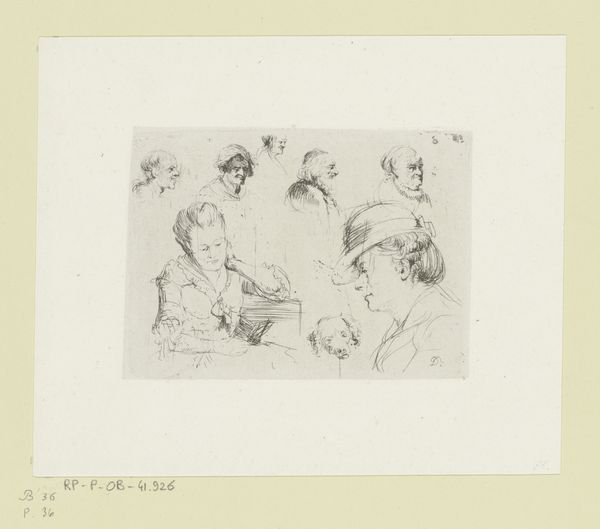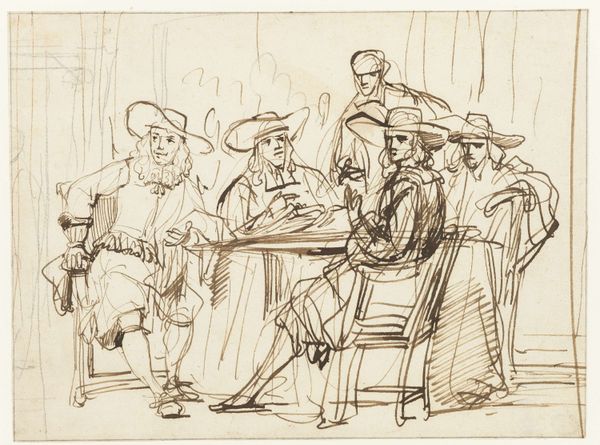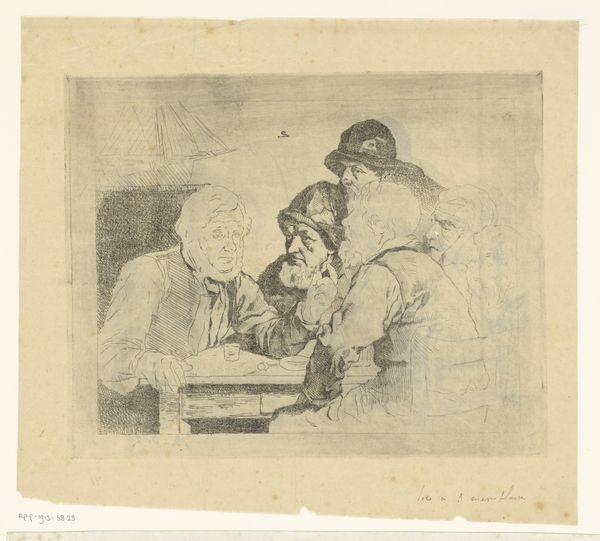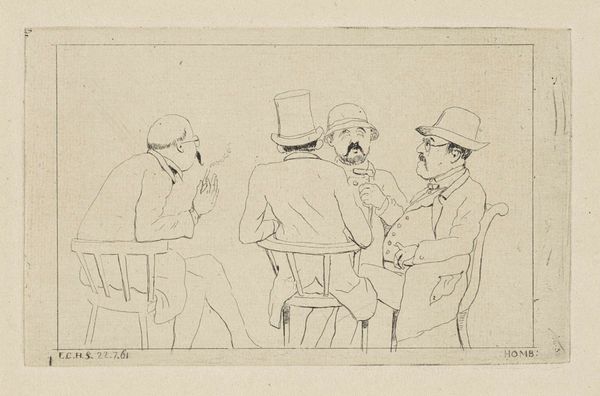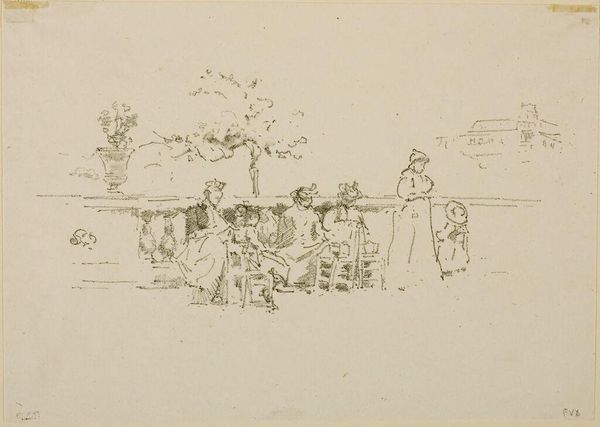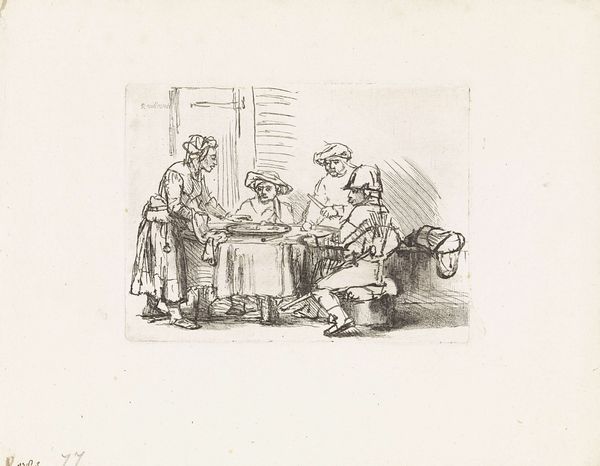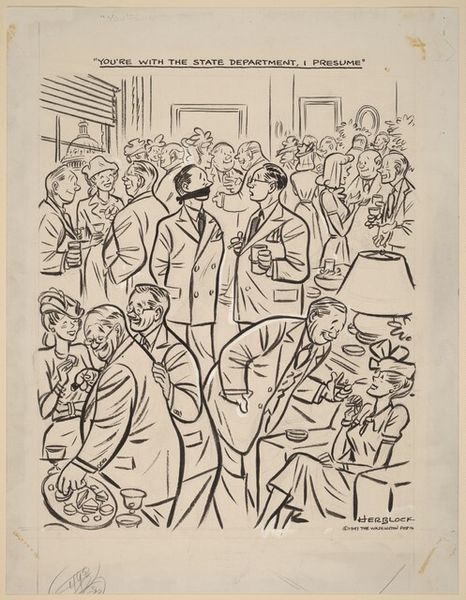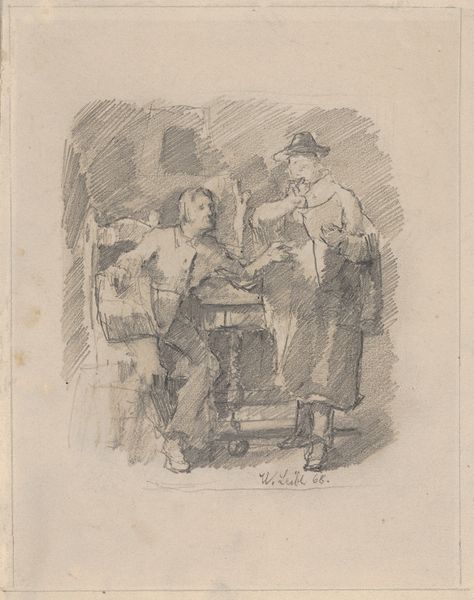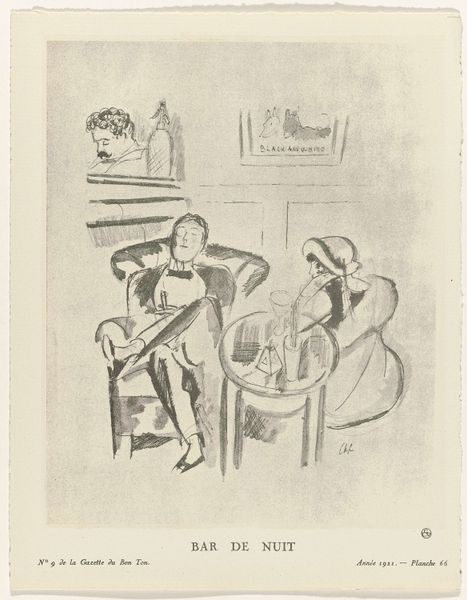
Copyright: National Gallery of Art: CC0 1.0
Edvard Munch made this etching, Cafe Bauer, Berlin, with a metal plate and acid. The artist covered the plate with a waxy, acid-resistant substance, then scratched an image into it with a sharp needle. Finally, he dipped the plate in acid to bite away the exposed lines. The incised lines hold the ink, transferring Munch’s gestures onto paper. This intaglio process demands careful planning, as the image prints in reverse. Looking closely, you can see the etched lines varying in depth and thickness, which give a sense of light and shadow and add to the image’s emotional intensity. Although associated with Old Master printmaking, etching was ideally suited to capture modern life. The tonal subtleties achieved here are a product of close observation and skilled labor. The composition captures a moment of urban social life, inviting us to consider the fleeting nature of experience, and the complex ways in which class and race operate in public spaces.
Comments
No comments
Be the first to comment and join the conversation on the ultimate creative platform.

